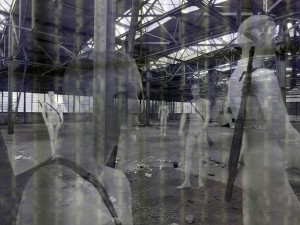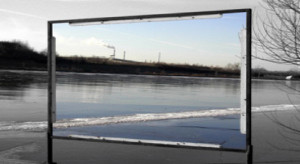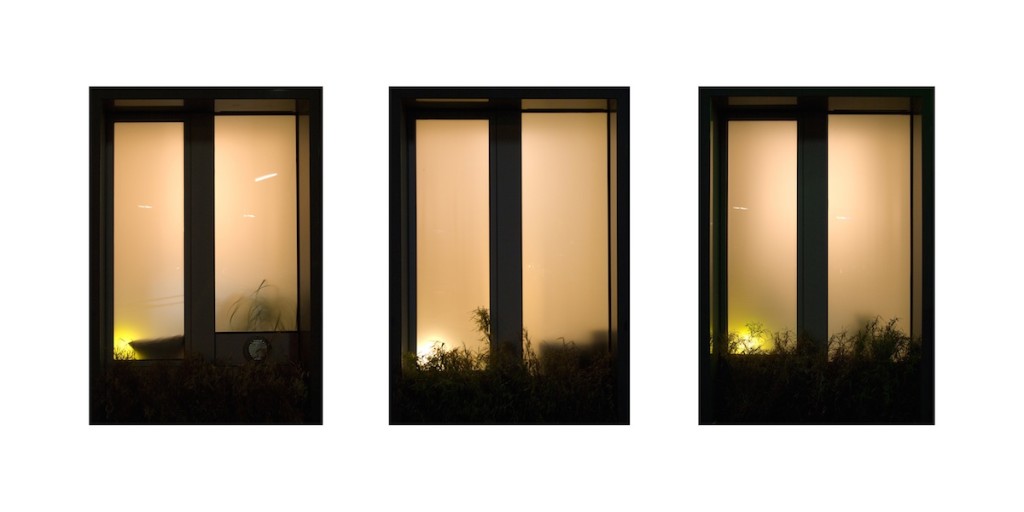Return to Current Table of contents
Dan Duda is President of Central Pennsylvania MENSA. He writes on issues related to particle physics for various publications. He has extensive experience in brand development and enhancement, market research, and strategic planning. He is a graduate of the State University of New York and he completed a special executive “fast track” MBA program at Harvard University.
“The most beautiful thing we can experience is the mysterious.
It is the source of all true art and science.” … Albert Einstein
Michael Michlmayr Full Portfolio
What does photographer Michael Michlmayr have in common with physicist Albert Einstein? More than you may think. In fact, there’s a surprising range of congruence between science and art. What we learn about the quantum world, for example, is beyond our intuitive experience. We haven’t gained this knowledge from the use of our five senses, at least not directly. What we have done is extend those senses with telescopes, microscopes, radio antennae, the Large Hadron Collider, etc. Technology has allowed us to surpass the horizons of our innate senses and enter worlds that far exceed our core abilities of perception.
This fact reminds me of one of my college professors who described art as a way to express something that our usual vocabulary is incapable of articulating—a way of communicating feelings and perceptions that go beyond the ability of more mundane human senses and interaction. So, in a way, art is the technique that communicates feelings and emotions that supersede standard communications. And, for Michael Michlmayr, the camera is his “technology” for extending our senses beyond the limits of our natural human horizon.
Now for an example—and this one’s a mind-bender—many scientists feel that time doesn’t exist—at least not as we perceive it. According to Einstein, “people like us, who believe in physics, know that the distinction between past, present, and future is only a stubbornly persistent illusion.” His view was that everything that happens does so simultaneously in sort of a solid landscape. It’s like an old vinyl record—the stylus intersects the groove causing awareness of the vibrations stimulated at that specific point—but the whole record and all its grooves still exist at one time in spite of the fact that our attention is riveted to just one spot. (For those too young to remember vinyl records, think of the laser of a CD player interacting with the pits on a disk. And, if you’re too young for that, you’ll have to develop your own metaphor).
Interestingly a primary theme in Michael Michlmayr’s photography is time. And, very interestingly, he likes to portray time as being non-sequential. This not only fits Einstein’s view of time, but also his theory of relativity in which a sequence of events is not universally constant, but, rather, dependent on the relative motion of the observer. Particle physicists have also found that the smallest pieces of the universe are not bound to travel according to any established arrow of time. They move forwards and/or backwards motivated by—we know not what. And what’s even stranger is that, given Einstein’s claim that time doesn’t exist (at least not as we perceive it), our ability to visualize the quantum world seems impossible. And yet, here we have art attempting to break that barrier.
Assuming Einstein was right (and his track record is pretty impressive) what would the landscape of reality look like from his view of time? That’s the mystery Michael tackles with his camera, and tries to answer with his photography. His photo collection “Time Spaces / Coulises” is a prime example. It shows science and art coming together from two different directions, like protons in the Large Hadron Collider at CERN. And, in a similar way, his intent is to break through to a deeper reality held beneath the surface.
“My background is not in science,” Says Michael Michlmayr. “But I sense these inconsistencies about time. My idea is to disturb the time-line showing things completely together in one space. I can shift the time line by showing one individual in different spaces and then by including different individuals all moving in opposite directions.”
Pioneering quantum physicist Werner Heisenberg, famous for the Heisenberg Uncertainty Principle, said “The conception of objective reality…has thus
evaporated…into the transparent clarity of mathematics that represents no longer the behavior of particles but rather our knowledge of this behavior.” Could art (perhaps subconsciously) be trying to augment the clarity of mathematics with a visual conception? Think about the revolution in art that started with the French impressionists. At the time the stunned art establishment felt that, with the arrival of the camera, the need for painting was over. It seemed that with a click of a shutter a camera could accomplish in seconds what a portrait painter might spend months, or sometimes years, producing. How devastating that must have seemed to the portrait artist of the day. Could the impressionist movement have been inspired through, what Karl Jung called, the “Collective Unconscious”? Might the camera have motivated artists to use their skills to look deeper into reality to express feelings beyond what they felt a camera could reveal? And, interestingly, the quantum revolution began in earnest only years later.
And now, with artists such as Michael Michlmayr, the camera appears to be picking up the gauntlet dropped by the series of painting innovations that began with the impressionists. According to Picasso “Art is a lie that makes us realize truth, at least the truth that is given us to understand.” Lie or not, his view of forms is said to reflect recent insights from String Theory which advocate the idea that reality exists in eleven dimensions (and the math bears this out). Many of his cubist works can be interpreted as a view of an object covering more than the three spatial dimensions we perceive with our ordinary senses. Michlmayr’s photography tends to break the same barriers taking the viewer beyond the limits of everyday insight and closer to the reality hinted at by current science. Noted photography critic, Karen Seidner (Vienna) sums up his work this way: “At first glance, Michael Michlmayr’s works, in which he addresses his immediate urban environment, seem to be skillful snapshot photography—only when the visitor takes time to examine the spaces represented in them closely does he begin to notice that a constructivist game with reality is being played here. “
NY Times photography critic Susan Sontag said “The realism of photography creates confusion as to what is real.” That quote, slightly altered fits the current state of quantum mechanics perfectly: “The realism of mathematics creates confusion as to what is real.” Getting back to the nature of time, scientists at MIT are studying the structures of the brain that cause us to perceive time as sequential. They have discovered “…how two neural circuits in the brain work together to control the formation of such time-linked memories…the researchers used optogenetics, a technology that allows specific populations of neurons to be turned on or off with light to demonstrate the interplay of these two circuits.” [Science Daily, January 23, 2014]. Whatever time is, science appears to be on the path to explaining why we perceive it, incorrectly, as a serial phenomenon.
https://www.youtube.com/watch?v=I5rExaKLEoU
Science fiction is brimming with examples of non-sequential time. There seems to be no end of analysis and speculation about the closing segment of 2001: A Space Odyssey, for example. But the fact that Stanley Kubrick and Arthur C. Clarke intended to portray non-sequential time is not in doubt. The various Star Trek series and the movies frequently dealt with this theme. Five Starship Enterprises from different eras meet at a “temporal distortion”; a young Mr. Spock receives philosophical guidance from a very senior version of himself. These are just a few of the many attempts by the genre to help us visualize this fact of nature that is so difficult for us to grasp.
Going back a few centuries, Immanuel Kant weighed in on the limits of our senses with his concept of “the thing in itself.” [Critique of Pure Reason] Simply stated, Kant believed that we never have a direct experience of things because all of our perceptions are filtered through our senses. His idea was that there is a chasm between what goes on in our brains as we digest impulses from sight, hearing, touch, smell, and taste compared to what is really going on with objects outside of our heads. He called this the “subject-object problem.” Man cannot, according to Kant, perceive reality—he can only grasp indirectly from what his limited senses tell him. It can be speculated that both science and art are attempts to bridge that chasm.
Earlier I made a reference to Karl Jung’s “Collective Unconscious.” In a way, his thinking is an extension of Kant’s ideas. Along with Sigmund Freud, Jung made significant contributions to our understanding of what goes on beneath the surface of our awareness. Perhaps his most startling insight was the idea that, at a deep level, we are connected to the universe, past, present, and future. And that that connection has a subconscious impact on our thoughts and behavior. Could that connection be a driving force behind science, art, and philosophy? In Jung’s own words “As far as we can discern, the sole purpose of human existence is to kindle a light in the darkness of mere being…The dream is the small hidden door in the deepest and most intimate sanctum of the soul, which opens to that primeval cosmic night…” As you take in the works of Michael Michlmayr, consider the vision that inspires his art. Think about Jung’s perceptions as a possible driving force behind his message to us.
We might also consider other definitions of art for comparison. Most often these definitions point to a search for understanding reality beyond the obvious reach of our standard perception. For example, Frank Lloyd Wright said, “Art is a discovery and development of elementary principles of nature into beautiful forms suitable for human use.” Aristotle said, “The aim of art is to represent not the outward appearance of things, but their inward significance.” And closer to the point, Minor White was driven by a search for universal meanings as portrayed in his images. His search was, no doubt, fueled by his experiments with Zen Buddhism which provides an archetypal view of reality as being one thing, in one time. So, what is Michael Michlmayr trying to tell us?
Finally to the point of this article. I sense that there is a prime directive, of sorts, imprinted in our DNA that impels mankind, overall, to push toward a true understanding of reality. Somehow we seem to be emerging into a realization that there is far more to existence than can be digested by our five senses. The manifestation of this drive is rarely obvious, but it is there. We see it in the incredible insights revealed by science; we see it in the wisdom of philosophers through the ages; we see it in the leading edges of art that mystify most but provide visions of perceptions beyond current horizons to many; and we see it in the photographic works of Michael Michlmayr, who is finding new ways to use the camera as a tool to push us beyond the limits of our ordinary senses. In the immortal words of William Blake, “If the doors of perception were cleansed everything would appear as it is, infinite.” And, if you flip the “infinite” coin to the other side, you’ll find “timeless,” which is the essence of Michael Michlmayr’s message.
Michael Michlmayr Full Portfolio







